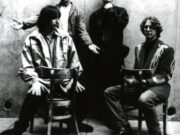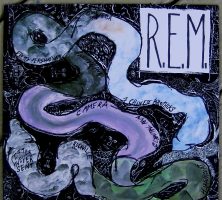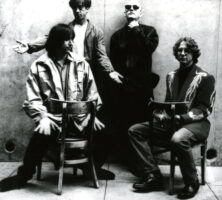R.E.M., one of the most celebrated rock bands in America, had its roots deep in the red Georgia clay. Formed in Athens in 1980, the band’s rise from the college rock scene to international fame was long and steady. Despite its commercial success, R.E.M. maintained a reputation for hard work and an independent, no-compromise approach to its music.
The Early Years
In 1979 Michael Stipe, an art student at the University of Georgia (UGA), befriended Peter Buck, an Emory University dropout who worked at the Wuxtry record store in Athens. At a party the pair met Mike Mills and Bill Berry, friends from Macon who were also students at UGA. Around March 1980 the four formed R.E.M. and began rehearsing in an abandoned Episcopal church, with Stipe handling vocals, Buck on guitar, Mills on bass, and Berry on drums. By the summer of 1980, R.E.M. was playing shows in Athens at Tyrone’s and the 40 Watt Club. Their single “Radio Free Europe” met with critical acclaim in 1981; Village Voice named it one of America’s best-ever singles, and the New York Times placed it among the top ten singles of the year. Chronic Town, the band’s five-song extended play (EP), was released by I.R.S. Records in 1982 to solid reviews. The EP was followed by the richly textured and obliquely lyrical Murmur (1983), hailed by Rolling Stone magazine as Album of the Year. Within a year the album had sold 200,000 copies and reached number thirty-six on the Billboard charts.
Over the next four years the band released four albums: the cryptic Reckoning in 1984; the folksy Fables of the Reconstruction in 1985; Lifes Rich Pageant in 1986, the band’s most successful album up to that point; and Document in 1987, a cynical, more overtly political work that gave R.E.M. another hit single, “The One I Love.” In this time frame the band also released two collections: an album of B-sides and outtakes entitled Dead Letter Office (1987) and a collection of I.R.S. hits named Eponymous (1988).
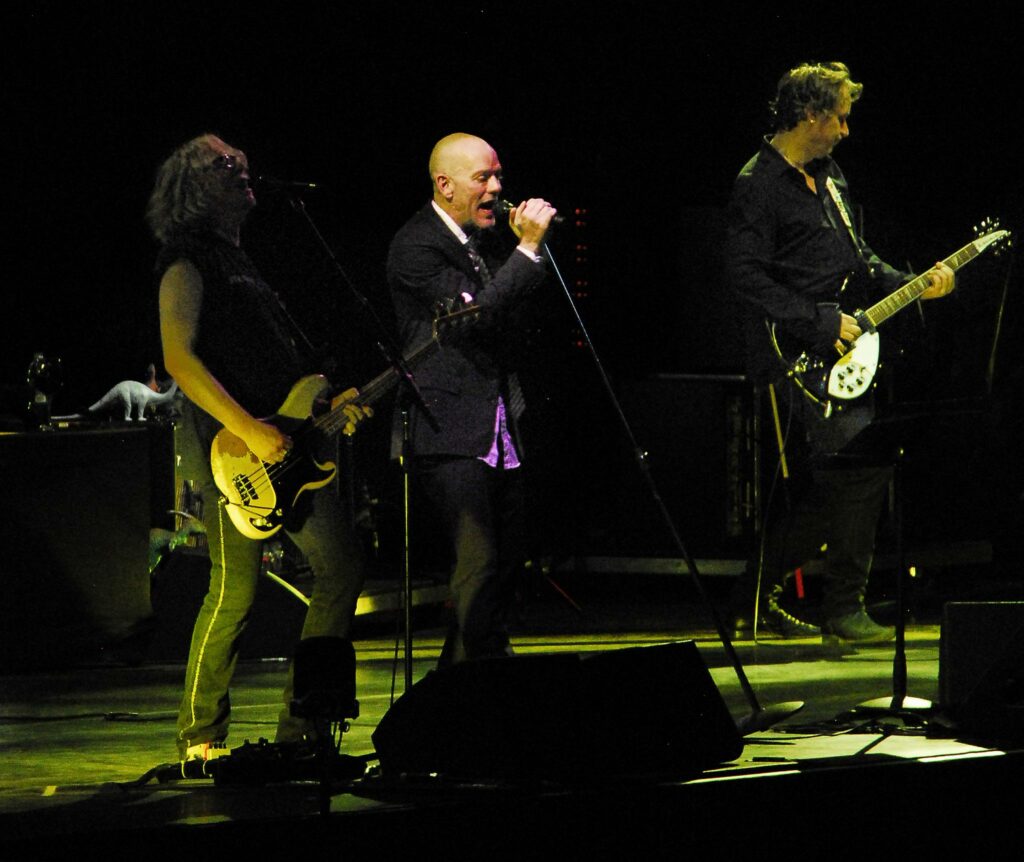
Rise to Fame
After fulfilling its contract with I.R.S., R.E.M. signed a five-record contract with Warner Brothers for $10 million, a hefty sum for a band identified with the college rock movement. R.E.M.’s first album for Warner Brothers was Green (1988), which the band members called their most positive work thus far. The album garnered ecstatic reviews, with some critics calling R.E.M. the best band in the world. Their next release was Out of Time (1991). While R.E.M. had spent the 1980s touring for each of its albums, the group chose not to do so for Out of Time. Nevertheless, the album became the first record by a rock group to top the Billboard charts in over a year, its success eclipsing even that of Green. Out of Time also became one of R.E.M.’s top-selling records and gave the band the smash hit “Losing My Religion.”
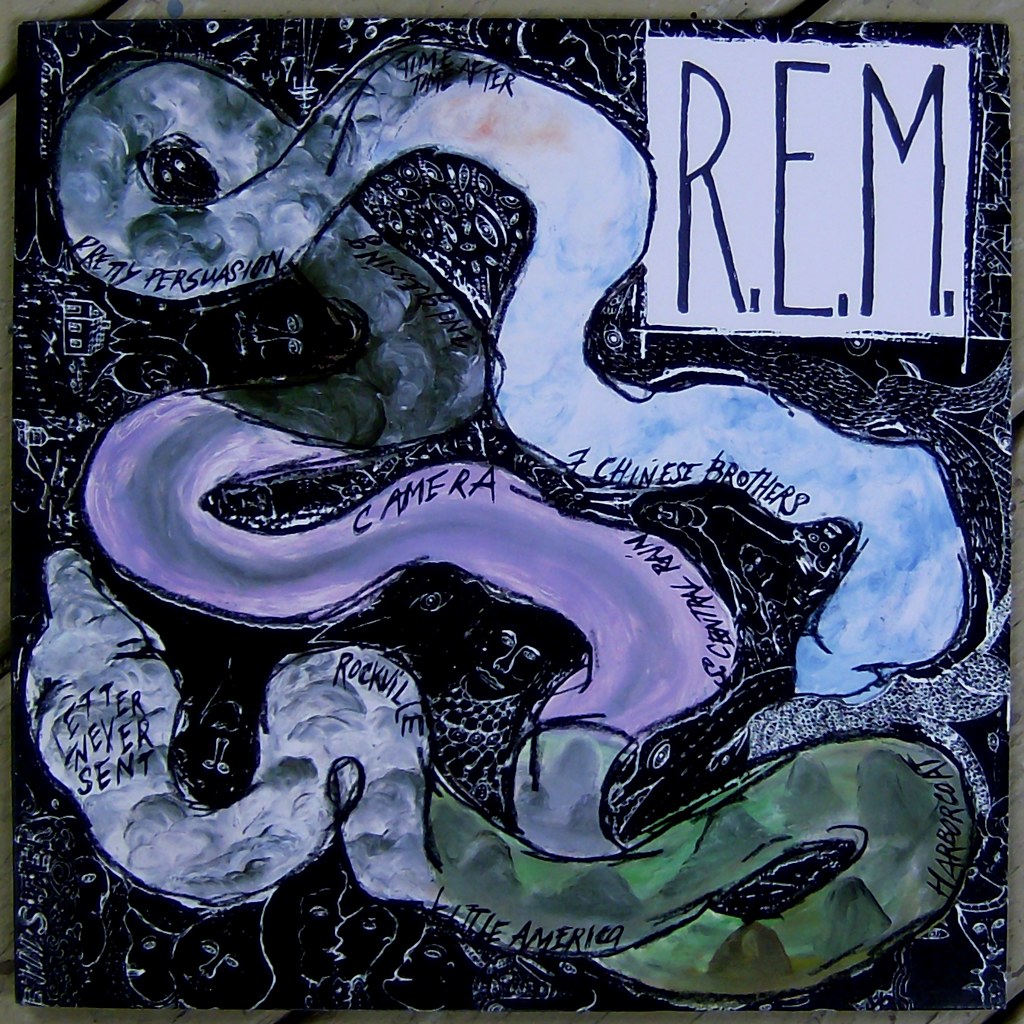
The Mature Work
Considered by some to be the band’s strongest work, the elegiac Automatic for the People was released in 1992—the title taken from the slogan of Athens soul-food restaurant Weaver D’s. This powerfully evocative album, hailed as a masterpiece by critics, had string arrangements by John Paul Jones of Led Zeppelin fame and contained the hit single “Everybody Hurts.” After a five-years hiatus, the band decided to go back on the road to support the hard-driving album Monster, released in 1994. While promoting the album, Stipe responded to questions about his sexuality by saying that he had romantic relationships with both men and women—thus outing himself for the first time to the public. This tour proved to be traumatic for the group as drummer Bill Berry suffered from a near-fatal brain aneurysm in Switzerland. After Berry’s recovery the band released New Adventures in Hi-Fi in 1996. Soon after the album’s release, R.E.M. signed another five-record contract with Warner Brothers for an unprecedented $80 million—the highest sum ever paid to a band at the time.
Despite the level of success R.E.M. had reached, Berry decided to leave the band in 1997, explaining that he “was ready to do something else.” In the wake of Berry’s departure, R.E.M. released the fragile, quiet Up in 1998. Up harkened back to Automatic’s introspection and offered, in lieu of drummer Berry’s work, guest drummers, drum machines, and tape loops.
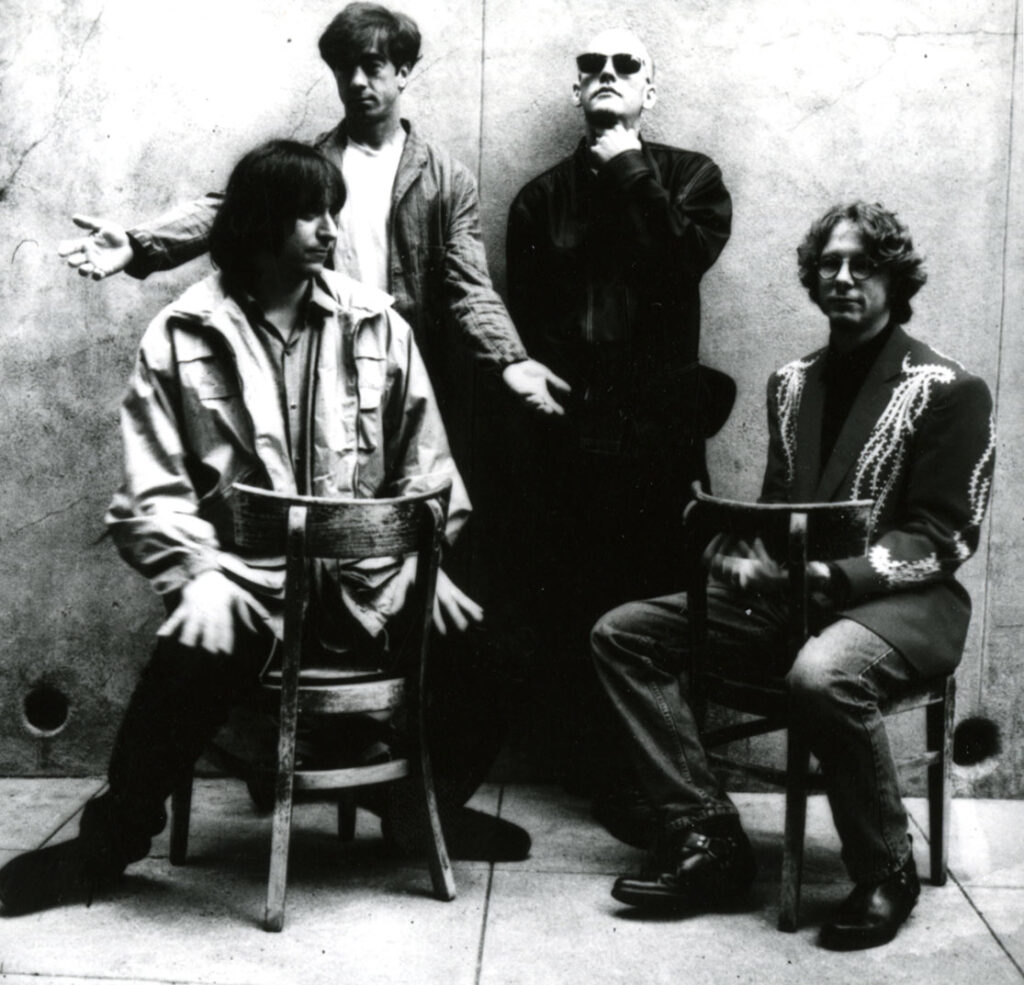
The band released Reveal in 2001 and Around the Sun in 2004. In 2006 R.E.M. was inducted into the Georgia Music Hall of Fame, and the following year the band was selected for induction into the Rock and Roll Hall of Fame.
The band released Accelerate in 2008 and its final album, Collapse into Now, in 2011. In September 2011 R.E.M. announced that it had “decided to call it a day as a band.” At the time it disbanded, the group had sold more than 70 million records, cementing its reputation as one of the most successful bands in American history.


